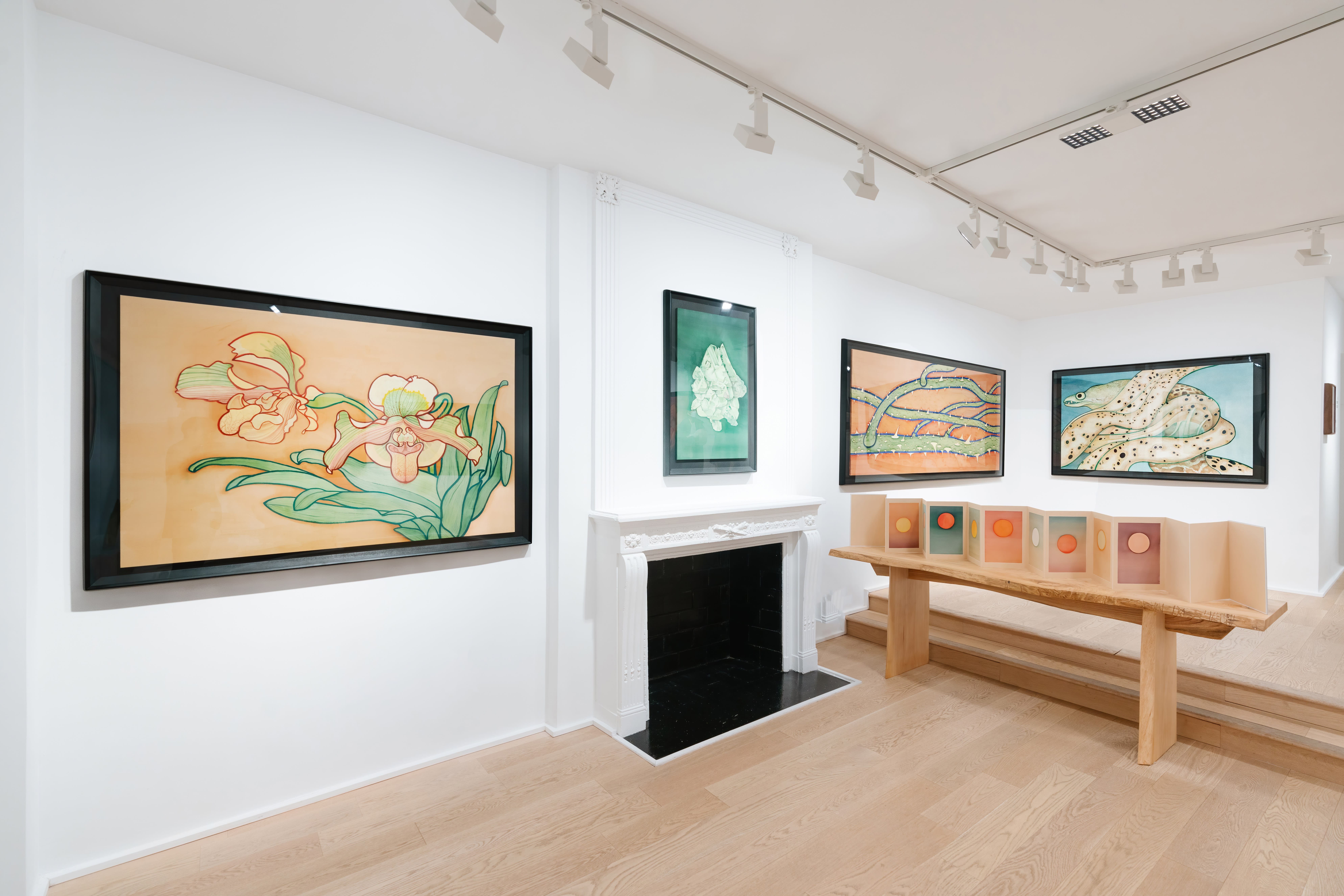We are delighted to announce the publication of Fang Xian’s article The “Unorthodox” Artistic Perspectives of Young Contemporary Artists, highlighting FQM artists Zhang Xiaoli and Chen Duxi, in the Artists (美术家) art journal, Issue 21 (Spring 2024). The Artists journal, which initially launched as a bimonthly publication in Hong Kong in 1978 and became a highly influential art periodical in the 1980s and 1990s. After being discontinued for over twenty years, it resumed publication as a quarterly publication on April 30, 2019. The revitalized Artists magazine adopts an academic, professional, and knowledgeable approach, aiming to foster global art exchange and dissemination.
Authored by independent scholar Fang Xian, this article explores how the younger generation of Chinese artists reinterprets traditional painting in innovative ways. Taking FQM artists Zhang Xiaoli and Chen Duxi as examples, the article delves into the innovative paths that these new-generation Chinese artists take on to re-examine Chinese traditional painting from three “unorthodox” artistic approaches. Through an analysis on their practices, the article offers readers a fresh perspective to appreciate and understand the beauty of contemporary artistic innovation.

When traditional painting encounters the contemporary context, the most intuitive impression that viewers get is symbolization. Starting with After Shen Zhou in her Lego Landscape Series initiated in 2014, Zhang Xiaoli embarked on a multifaceted reflection of traditional painting within the contemporary artistic sphere. For instance, addressing the prevalent practice of extensive imitation in traditional painting, Zhang’s innovation lies in ingeniously symbolizing modern elements within traditional forms. By seamlessly integrating classic Lego figures and components into landscape paintings, Zhang not only injects a modular contemporary language into traditional painting but also pays homage to ancient perspectives on traditional landscape painting. For example, the blurred faces of Lego figures in her landscapes echo Wang Wei's notion of "distant figures have no eyes" from his writing Shan Shui Lun (山水论), while the various techniques of leaf-rendering outlined in the Manual of the Mustard Seed Garden (芥子园画谱) find reflection in the arrangement of trees in her Lego Landscape Series.

Derived from technological advancements and societal evolution, traditional brushes have seen a decline in practicality, while the contemporary pursuit of color has disrupted the traditional concept of "five gradations of ink (墨分五色)," marking yet another transformation as traditional painting adopts to the modern era. Chen Duxi's art is distinguished by its bold and vibrant colors, while still retaining traditional visual elements; however, instead of relying solely on lines, the artist employs layers of mineral pigments to convey varied textures. Conversely, Zhang Xiaoli opt for neatly structured lines and expressing themes through layers of color blending. This redefinition of visual elements aligns more closely with the visual language of the contemporary context.

The final “orthodox” perspective introduced in this article focuses on the distinctiveness of painting themes. While Dong Qichang's Theory of Southern and Northern Schools (南北宗论) established paradigms and norms for traditional painting, it is only through integration of personal cognition and emotions into the process of imitation or creation that classical art can effectively evolve with the times and resonate with audiences. In Chen Duxi's The Order of BodySeries, the artist abstracts and magnifies many common elements from daily life, inviting viewers to explore the "image" of materials through sight and senses, thus tracing back to the origin and seeking the essence of "perception." Zhang Xiaoli's Boxed Landscape Series is deeply influenced by cultural atmosphere and living environment, with landscapes enclosed in boxes metaphorically representing contemporary individuals encircled by secular constraints, much like the information cocoons each person constructs. Another piece of her work, The Enigma of Time, cleverly incorporates her interdisciplinary background in biology, blending various scientific themes and mystical elements into her art, such as the phosphorescence of alchemists and celestial symbols.
In conclusion, as young artists liberate themselves from past burdens and embrace an “unorthodox” approach by selectively adopting traditional standards and techniques, on one hand, they can focus on nurturing their inner selves and interests, fostering emotional resonance with audiences; on the other hand, it establishes a deeper connection between audiences and artists, thereby prompting audiences to appreciate art in a purer form.
About the author: Independent researcher. Xian served as a Specialist, Head of Sales and Vice President in Sotheby’s New York Classical Chinese Paintings Department, where he masterfully orchestrated a series of remarkable achievements, leading numerous record-breaking sales and auctions. Furthermore, he facilitated donations of multiple prestigious private collections to esteemed American museums and provided authentication and valuation of Chinese paintings and calligraphy services to non-profit institutions. This enduring synergy between Xian’s connoisseurship endeavors and creative explorations has endowed him with a unique scholarly perspective and artistic innovation in the realm of Chinese art.



